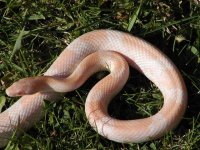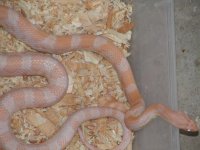JCam99
New member
Hello
I know that opal is amel X lavender, but I am wondering exactly what the pearl corn phase opal is? I am thinking it is amel X lavender X anery A?? The reason I am asking is because I will have some opal hatchlings in a little over a month and they will all be het for anery A. Some of them I am going to sell (so I want to be able to accurately explain what the het for anery means specifically if they breed siblings), plus we will probably keep a pair for future breeding and wondered what we would get a few years down the road.
Thanks for the help, and if anybody has any pics of an amel X lavender X anery A please post, maybe I will be able to tell the difference b/w those and just regular opals.
I'm so excited to see these opal babies when the hatch out I can hardly stand the wait! And I have another clutch, possibly more, due from the same group !!
Later
Jcam99
I know that opal is amel X lavender, but I am wondering exactly what the pearl corn phase opal is? I am thinking it is amel X lavender X anery A?? The reason I am asking is because I will have some opal hatchlings in a little over a month and they will all be het for anery A. Some of them I am going to sell (so I want to be able to accurately explain what the het for anery means specifically if they breed siblings), plus we will probably keep a pair for future breeding and wondered what we would get a few years down the road.
Thanks for the help, and if anybody has any pics of an amel X lavender X anery A please post, maybe I will be able to tell the difference b/w those and just regular opals.
I'm so excited to see these opal babies when the hatch out I can hardly stand the wait! And I have another clutch, possibly more, due from the same group !!
Later
Jcam99



